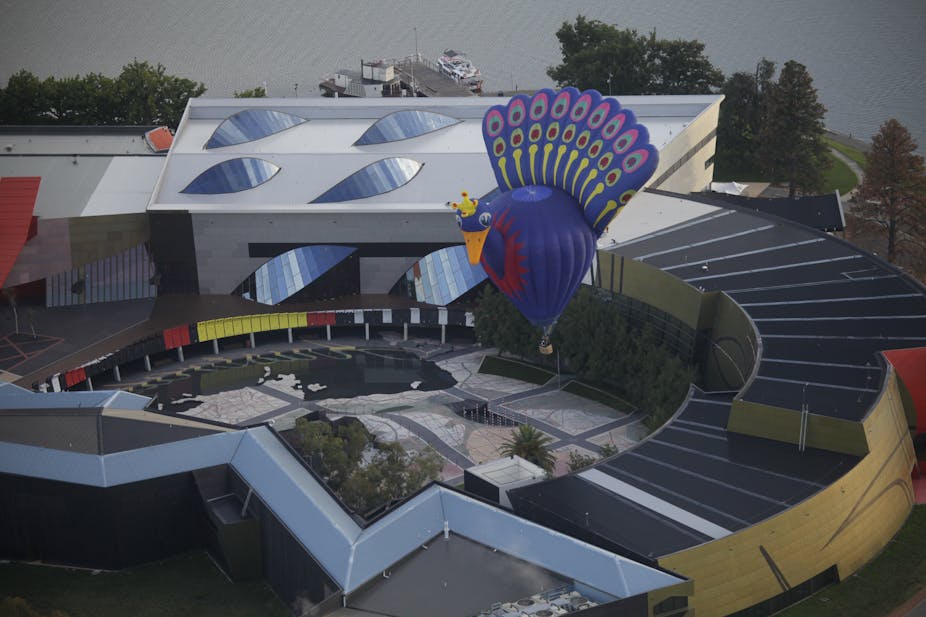After a sustained period of slimming down under the previous Labor government it looks like the GLAM sector (Galleries, Libraries, Archives and Museums) has still not achieved its target weight.
Even before the announcement of the 2014 Budget, there were “budget bad news” leaks flying around in the media. One of them has proved correct and will have major ramifications for some of the nation’s biggest cultural institutions – and deliver a saving of A$2.4 million over four years.
The “back-office functions” of the National Archives, the Film and Sound Archive, the National Gallery, National Library, National Museum, Old Parliament House and the National Portrait Gallery, all Canberra-based collection agencies, will be merged.
Presumably the “back office” includes things such as pay roll, human resources, and security. I am sure that many in the sector will welcome true efficiencies in these domains – especially if they free up resources for the core business of the national cultural institutions: conserving, curating, researching and, perhaps most crucially, providing access to the nation’s irreplaceable cultural collections.
What’s clear, though, is that there is no consensus yet on what exactly is meant by the “back-end” functions. Might they also include conservation labs, collection registration and digitisation services, visitor evaluation and marketing?
Moves to consolidate these functions have been mooted in the past and fought fiercely by directors protecting their own patches. The sector is, of course, not immune to internal competition and rivalries.
Speaking of which, it’s notable that the Australian War Memorial is not on the list of institutions to be “merged”. Yes, it’s administered through another part of the government, the Department of Veterans Affairs, but perhaps the upcoming suite of centenaries around the first world war and the transformation of Anzac Day from day of mourning to what historian Graeme Davison called an “inclusive national festival”, means that its role is seen as more “civil sacred” than cultural?
Pros and cons
What will happen when all these historically evolved – and some might say somewhat eccentric – institutions are forced into some kind of one-size-fits-all administrative structure? That structure, let’s not forget, will also have to look after the unique architectural heritage buildings that house these institutions.
Taking a Pollyanna approach, I can see there may be some benefits in terms of transparency, governance and ethics. Inclusion of Indigenous and other groups might be better supported through a single platform.
On the negative side I foresee a homogenisation of approaches as a range of institutions are locked into limited service providers for exhibition design and for the development of websites, apps and digital content.
If conservation labs are centralised we may see a return to out-moded “value neutral” conservation. That term describes the tendency to treat all cultural objects as equal, defined by Eurocentric concepts of what is valuable. It’s something that occurs when knowledge sharing between curators, researchers and communities is not enabled and encouraged.
Finally it is not difficult to imagine a more pervasive political and government influence over curatorial policy, exhibition approaches and development plans as this diverse group of institutions are corseted into a single annual reporting, budgeting and strategic planning framework.
Whose responsibility is our heritage?
The merging of museum administrative functions will be the latest step in a concerted trend away from viewing public investment in culture and the humanities as the responsibility of government. Increasingly, philanthropy is treated as the appropriate source of financial support – and the “community” is given the responsibility of caring for its heritage.
Of course communities, in all their diversity, are indeed the rightful custodians of their cultural heritage – but simply being identified as a “community” (often problematic in itself) doesn’t come with a chequebook, and access to the time, skills and resources that enable at-risk cultural material or places to be cared for.
For instance, in the related part of the heritage sector that protects cultural and natural heritage places, the government is currently consulting on its draft Strategy for Australia’s Heritage.
A single strategy that sets out a national approach to cultural and natural heritage is a long-awaited step forward and the fact that the community is central to the strategy is positive. But the strategy includes a financial commitment to only one national heritage place, Port Arthur, and focuses on the Green Army program, as the main source of support for Indigenous and other forms of heritage.
The Green Army is essentially a work for the dole program to employ 16-24 year olds. This may be a good thing for heritage in some circumstances – but it is a stretch to imagine how such groups can care for the breadth and complexity of Indigenous and other community heritage that may need special care.
Perhaps the most important trend in the GLAM and heritage sectors over the last decade or so has been the provision of digital access to collections and new modes of public participation. We’ve seen a move away from culture and heritage as the preserve of “experts” and the democratisation of history making.
These changes are transforming how communities relate to their past, giving new forms of access to people outside metropolitan areas, to the young and to the elderly.
This work relies on strong institutions that have the resources to care for our cultural materials, to make their collecting strategies bold, to be independent and critical of prevailing orthodoxies.
A one-size-fits-all administration system is unlikely to be a comfortable outfit for the sector.

